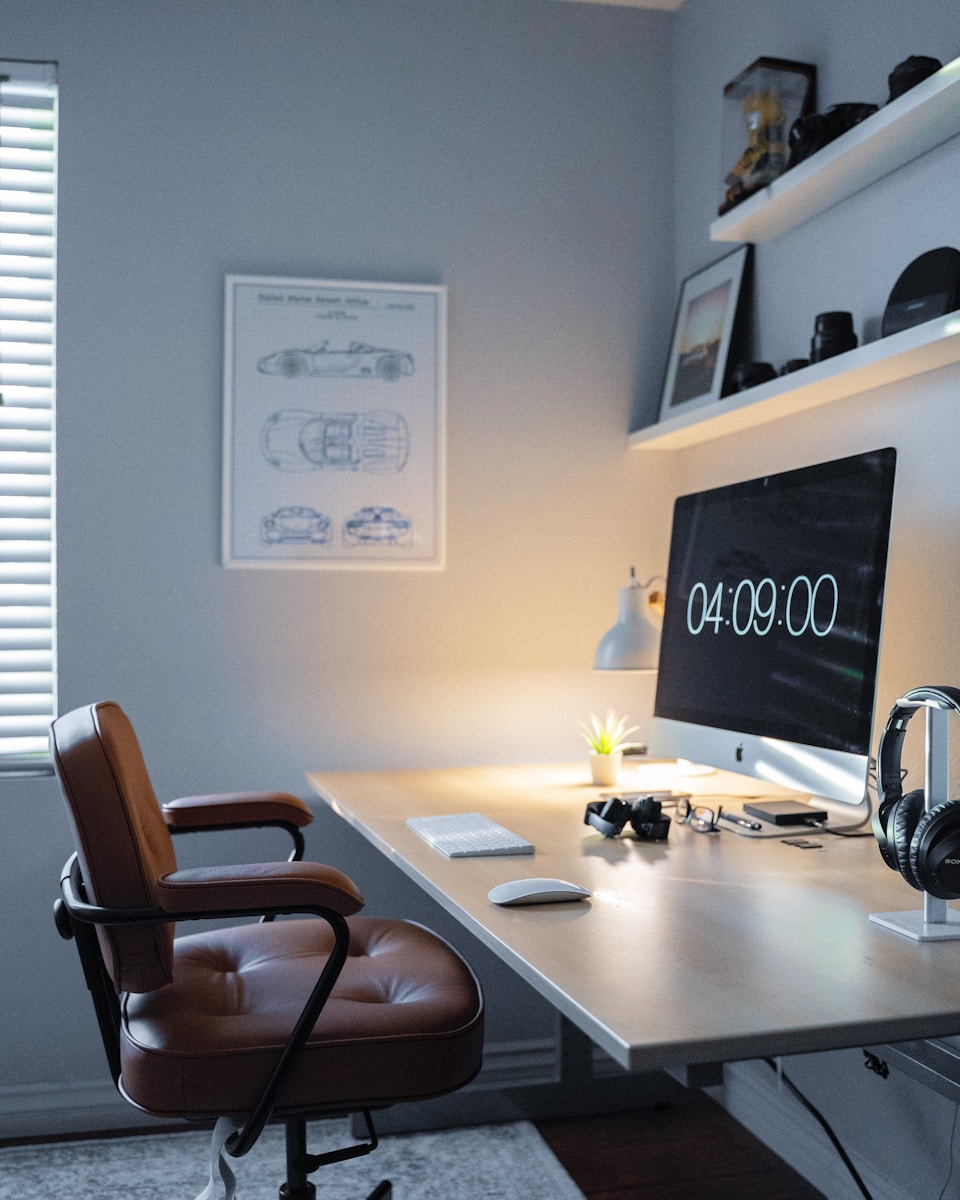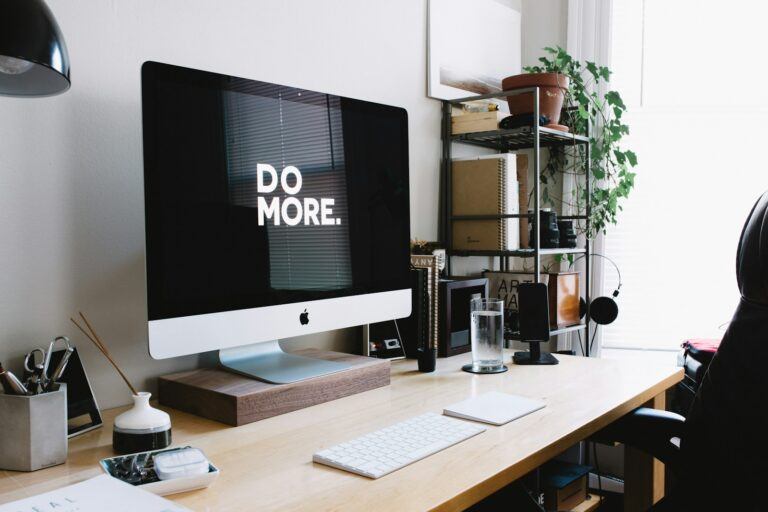How To Create A Home Office That Boosts Productivity
How to Boost Productivity with a Home Office Setup
Working from home has become increasingly popular in recent years, with many people looking for ways to balance their work and personal lives. However, creating a home office that boosts productivity can be a challenge. Whether you’re a freelancer, entrepreneur, or remote worker, designing a productive home office space is essential to your success.
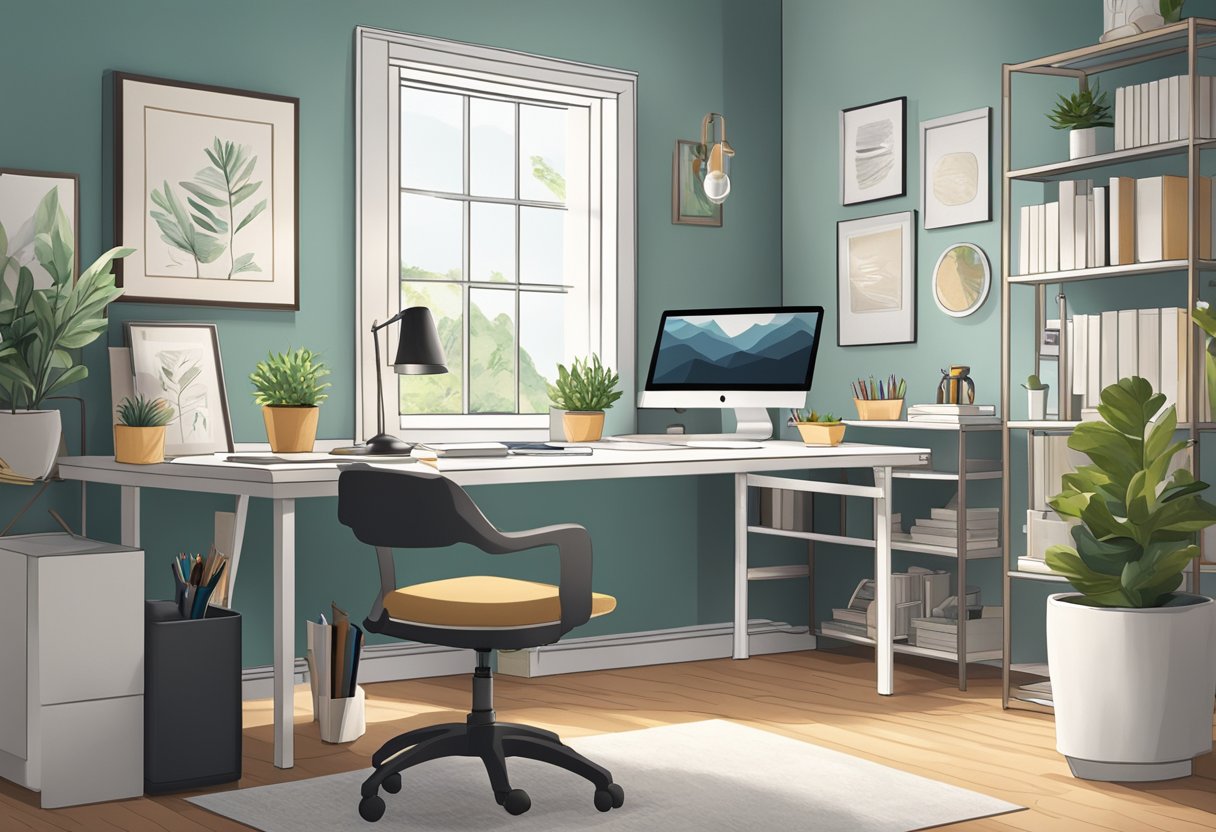
Designing Your Home Office Space To create a home office that boosts productivity, it’s important to start by designing a space that’s both functional and comfortable. Choose a dedicated space in your home that’s quiet and free from distractions. Consider investing in a comfortable chair and ergonomic desk to help you maintain good posture and avoid back pain. Make sure your workspace is well-lit, and consider adding plants or artwork to personalize your space and boost your mood.
Enhancing Productivity and Well-Being Once you’ve designed your home office space, there are several strategies you can use to enhance your productivity and well-being. Start by setting clear goals and deadlines for your work, and create a schedule that allows you to focus on your most important tasks during your most productive hours. Take regular breaks to stretch and move your body, and consider incorporating mindfulness practices like meditation or deep breathing to reduce stress and improve focus.
Key Takeaways
- Design a functional and comfortable home office space that’s free from distractions.
- Set clear goals and deadlines for your work, and create a schedule that allows you to focus on your most important tasks during your most productive hours.
- Take regular breaks to stretch and move your body, and incorporate mindfulness practices like meditation or deep breathing to reduce stress and improve focus.
Designing Your Home Office Space
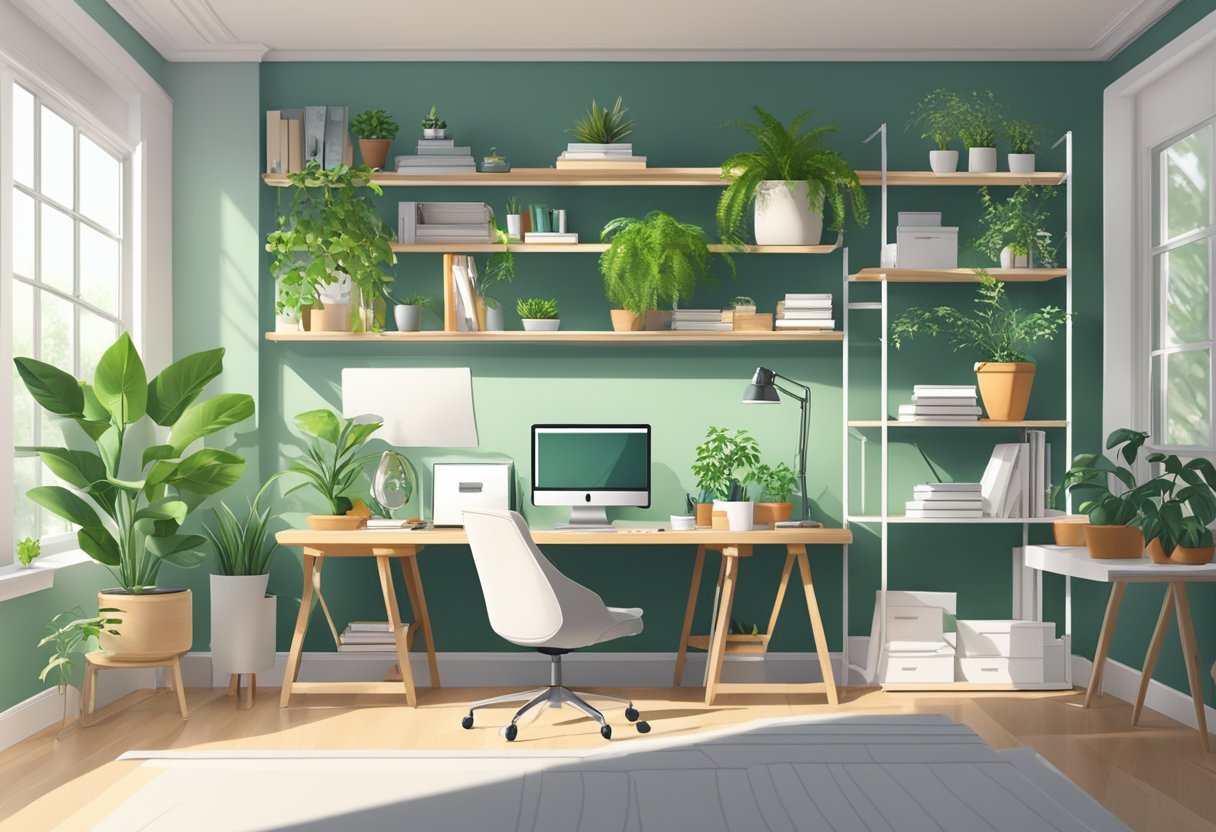
When it comes to designing your home office, there are a few key factors to consider that can help boost your productivity. Here are some tips to help you create a workspace that is both functional and comfortable.
Selecting the Ideal Location
One of the first things to consider when designing your home office is the location. You want to choose a space that is quiet and free from distractions. Ideally, your home office should be in a separate room or area of your home, away from the hustle and bustle of everyday life. This will help you stay focused and productive throughout the day.
Optimizing Layout and Workflow
The layout of your home office can have a big impact on your productivity. You want to create a space that is easy to navigate and that allows you to move around freely. Consider the flow of your workspace and how you can optimize it to make your work easier and more efficient. You may want to invest in ergonomic furniture, such as an adjustable desk and chair, to help reduce strain on your body and improve your comfort.
Incorporating Natural Lighting
Natural light can have a big impact on your productivity and mood. When possible, try to position your desk near a window to take advantage of natural light. This can help reduce eye strain and improve your overall well-being. If natural light is not an option, consider investing in high-quality lighting fixtures that mimic natural light.
Choosing the Right Furniture
The right furniture can make all the difference when it comes to creating a productive workspace. Look for ergonomic furniture that is designed to support your body and reduce strain. You may also want to invest in storage solutions, such as a filing cabinet or shelving, to help keep your workspace organized and clutter-free.
Adding Personal Touches
Finally, don’t forget to add some personal touches to your home office. This can help make the space feel more inviting and inspiring. Consider adding artwork, plants, or other decor that reflects your personal style and interests. This can help boost your motivation and creativity throughout the day.
By following these tips and designing a home office that is both functional and comfortable, you can create a workspace that helps you stay productive and focused throughout the day.
Enhancing Productivity and Well-Being
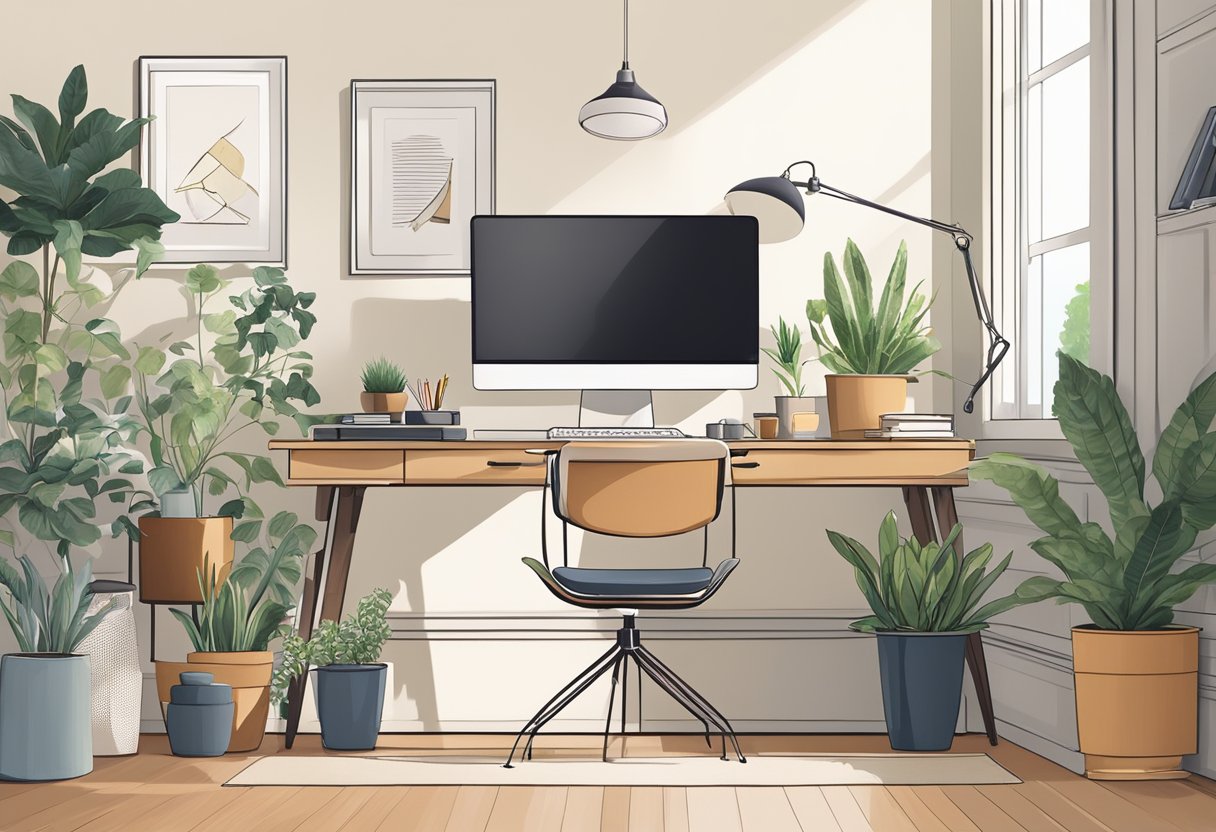
To create a home office that boosts your productivity, you need to focus on enhancing your well-being. This means managing distractions and clutter, improving comfort and ergonomics, creating an energizing atmosphere, and establishing routines and breaks.
Managing Distractions and Clutter
Distractions and clutter can negatively impact your productivity and mood. To minimize distractions, consider noise-canceling headphones or background music. To declutter your workspace, use organizational tools such as project management software, desk organizers, and storage containers.
Improving Comfort and Ergonomics
Comfort and ergonomics are crucial for maintaining focus and efficiency. Invest in an adjustable desk and an ergonomic office chair with lumbar support to prevent eye strain, back pain, and fatigue. Also, consider using ergonomic accessories such as a footrest, wrist rest, and an ergonomic keyboard.
Creating an Energizing Atmosphere
An energizing atmosphere can boost your creativity and workflow. Use task lighting and natural lighting to ensure proper illumination for your work area. Incorporate plants and inspirational quotes to add inspiration and relaxation to your workspace. Also, consider using a desk lamp to create a warm and inviting atmosphere.
Establishing Routines and Breaks
Establishing routines and breaks can help you maintain a healthy work-life balance. Create a weekly schedule and prioritize your tasks to avoid burnout and increase efficiency. Take breaks to recharge and avoid fatigue. Use the Pomodoro technique to work in short bursts and take frequent breaks.
By creating a well-designed and organized workspace, you can improve your productivity, mood, and well-being. Consider using productivity tools, minimizing distractions, and improving your work efficiency to optimize your work performance. Finally, don’t forget to take care of your personal life and establish a healthy work-life balance.
Frequently Asked Questions

What essential items are needed for an effective home office setup?
To set up an effective home office, you will need a few essential items. These include a desk, a comfortable chair, a computer or laptop, and a reliable internet connection. Additionally, you may want to consider investing in a printer, a scanner, and a phone. Having a good quality headset or speakerphone can also be helpful for video conferencing and phone calls.
What are the best practices for designing a home office that enhances focus and efficiency?
When designing a home office, it is important to create a space that fosters focus and efficiency. This can be achieved by choosing a quiet location in your home, minimizing clutter, and incorporating elements that inspire productivity. Consider using a color scheme that promotes calmness and focus, such as shades of blue or green. Adding plants or artwork can also help create a pleasant and inspiring environment.
How can ergonomics be integrated into a home office to improve productivity?
Ergonomics refers to the study of how people interact with their environment in terms of comfort, safety, and efficiency. In a home office, ergonomics can be integrated by choosing a comfortable chair that provides good back support, positioning your computer screen at eye level, and using a keyboard and mouse that are comfortable to use. Additionally, taking frequent breaks and stretching can help reduce strain on your body and improve productivity.
What strategies can be employed to minimize distractions in a home office environment?
Distractions can be a major obstacle to productivity in a home office environment. To minimize distractions, consider setting up your workspace in a quiet area of your home, using noise-cancelling headphones, and turning off notifications on your phone and computer. Additionally, setting a schedule and sticking to it can help create structure and minimize distractions.
How does proper lighting affect productivity in a home office setting?
Proper lighting can have a significant impact on productivity in a home office setting. Natural light is ideal for enhancing your mood and productivity, so position your desk near a window to take advantage of daylight. Additionally, incorporate task lighting to ensure proper illumination for your work area. Bright, harsh lighting can cause eye strain and headaches, so choose lighting that is gentle and soothing.
What role does technology play in creating a home office conducive to high productivity?
Technology plays a crucial role in creating a home office that is conducive to high productivity. A reliable internet connection, a good quality computer, and software tools that help you stay organized and focused are all essential. Additionally, video conferencing tools such as Zoom or Skype can help you stay connected with colleagues and clients. It is important to invest in technology that meets your specific needs and helps you work efficiently.
